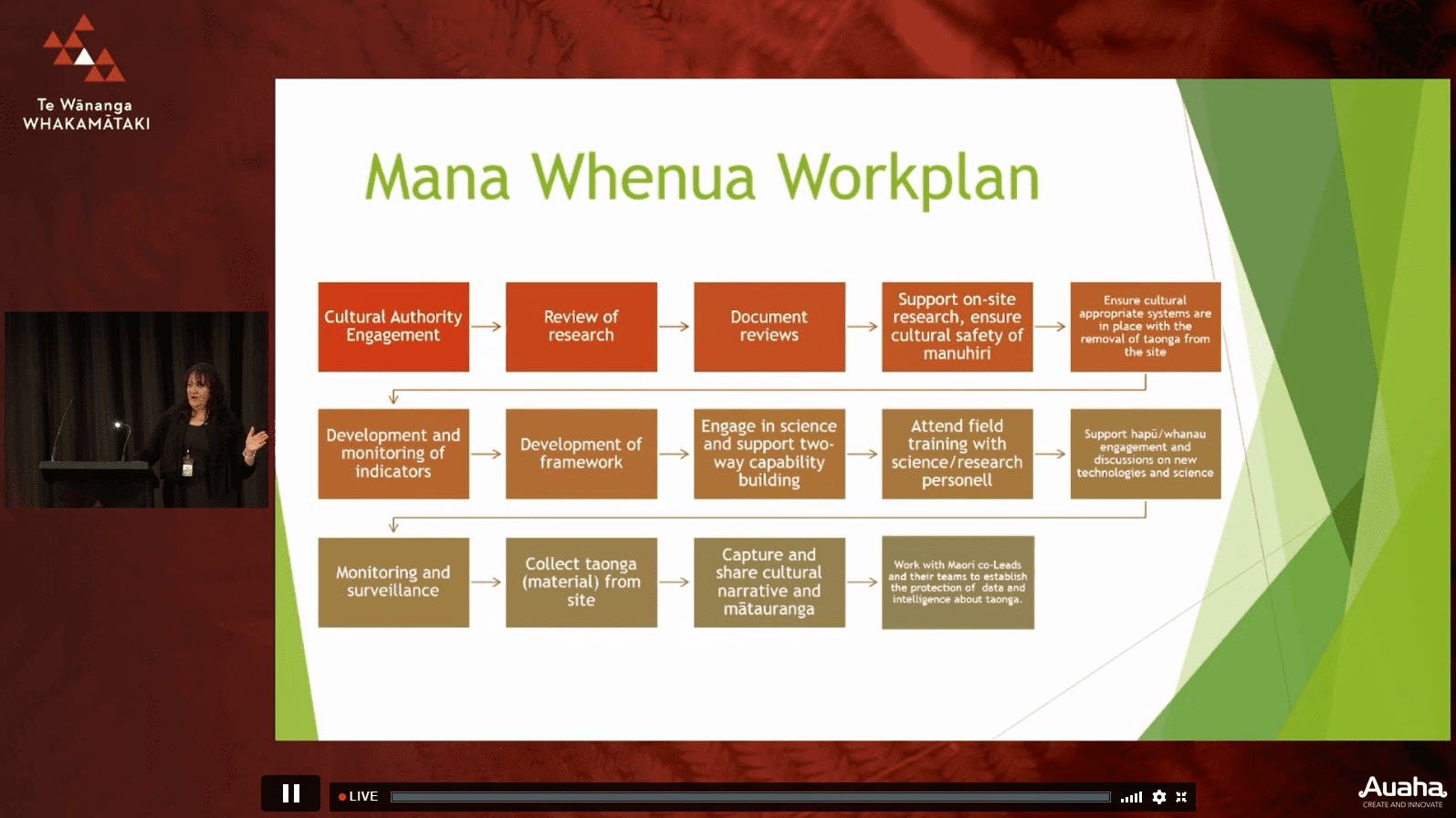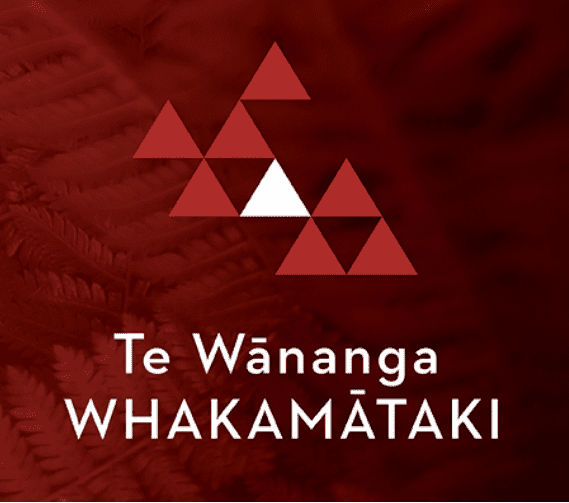
The wānanga, believed to be the first of it’s kind, celebrated Māori biosecurity practices and invited participants to delve deeply into Te Ao Māori.
It was supported by Biosecurity NZ and provided a safe environment for kaikōrero (speakers) to discuss everything from mātauranga Māori 101, to specific exemplars of when mātauranga and kaupapa Māori aligned with Western policy or science.
NRT research co-leads Alby Marsh (Ngāti Ranginui, Ngai Te Rangi, Ngā Puhi, Ngāti Hine, Te Rarawa) and Waitangi Wood (Ngatirua, Ngāti Awa, Ngāti Kahu, Ngāpuhi Nui Tonu) joined the line-up to discuss the development and application of Te Whakahononga approach.
Alby says “Within Te Whakahononga we have the Māori [NRT] co-leads, who promote the mātauranga, we have Western [NRT] co-leads, who promote the Western science, and what we are wanting to do is integrate them.”
“What this approach is looking to do is raise, or elevate, the mātauranga component within the Western science framework, to build complementarity across both.”
Waitangi says when NRT was first set up, Māori co-leads worked with their research partners to consider a pragmatic and different way to successfully connect scientists with mana whenua.
“We realised there was going to be 100 people across these NRT themes wanting to engage with mana whenua. So we pitched to them that we wanted to try a different approach,” she says.
“We wanted to streamline engagement and anchor the conversation of soveriegnty. We recognise that the whenua (nature) is the sovereign body and mana whenua (hapū and traditional Iwi to that naturescape) are the māngai, the voice of that whenua and that environment.”


What it looks like in practice
Biodiversity Management Areas (BMAs) are being produced from historical narratives that describe contiguous natural areas. These allow recognition of the provenance and sovereignty of data, information and taonga.
Scientists initiate their engagement with mana whenua in the relevant BMA(s) by completing a Disclosure Document – a template developed for NRT research. The research proposal is reviewed by mana whenua, who consider the level of engagement and are then able to more easily enter into discussions about the research. This approach informs negotiations and the right of mana whenua to veto the research in their rohe (if there aren’t appropriate formalised agreements put in place that protect their cultural authority and ensure that the research has documented cultural licence).
A Cultural Authority Agreement is then put in place, which spans the term of the research and/or the use of taonga, information and data derived from the BMA(s).
Ngā Rākau Taketake research theme leads have prioritised 14 mana whenua from BMAs across Aotearoa, with particular interest in working with researchers and scientists to find a solution for Phytophthora agathadicida and Austropuccinia psidii – plant pathogens killing our native biodiversity. Te Whakahononga has been well-received and adopted by mana whenua, researchers and scientists across the biosecurity and biodiversity research space.
Alby and Waitangi are Ngā Rākau Taketake research co-leads who have developed Te Whakahononga along with Juliane Chetham and Dave Milner, with support from Mark Bullians, Annette Combridge and Nick Waipara.
Te Wānanga Whakamātaki was hosted by Te Tira Whakamātaki (TTW), which means ‘the watchful ones’. TTW are an award-winning Māori environmental not-for-profit, with a strong focus on research and education. Established in 2015 by social scientist Melanie Mark-Shadbolt, plant pathologist Dr Nick Waipara and soil scientist Dr Amanda Black, TTW is the only nationwide Māori environmental not for profit, and is home to the Māori biosecurity network, the UN-aligned International Indigenous Youth Disaster Risk Reduction (DRR) Network and the National Iwi Chairs Forum’s biosecurity technicians. TTW’s vision is a world where Indigenous peoples and Indigenous solutions are valued in our collective ambition to protect nature and reduce the most pressing threats to the diversity of life on earth. They do this by reclaiming, empowering and developing Indigenous-led solutions under the pou (guiding principles) of: tohungatanga, rangatiratanga, mana motuhake, manaakitanga, and kaitiakitanga. For more information, go to www.ttw.nz.
